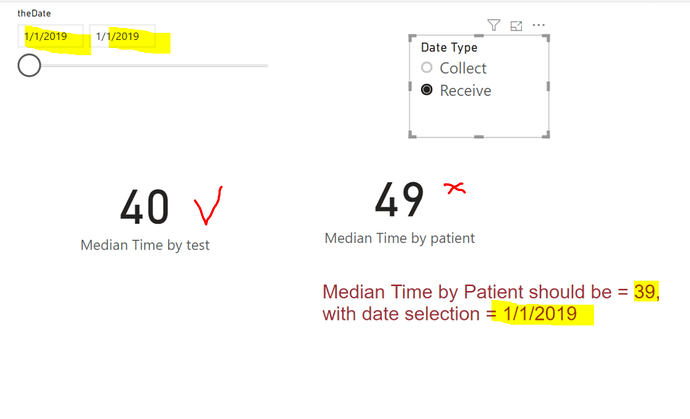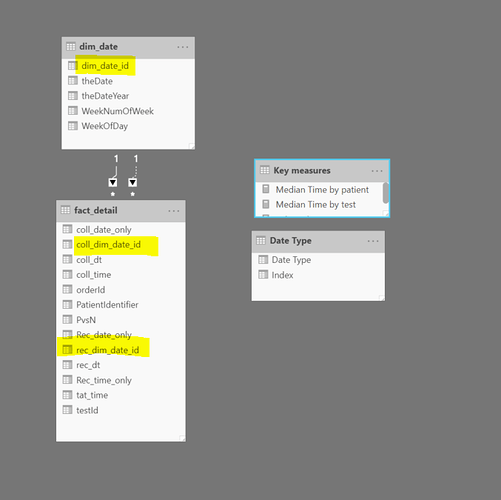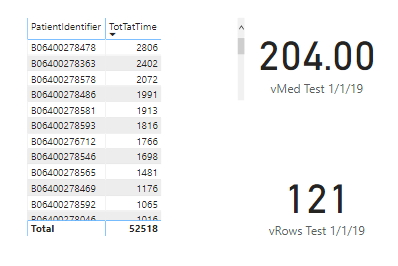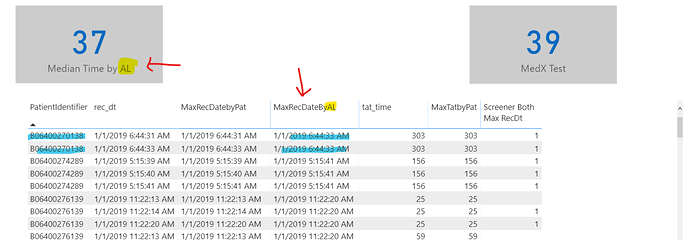Hi, my Median() by patient - dax logic gives me incorrect result.
Requirement:
I need to get Median Time by Test
I need to get median time by patient. If multiple tests are found for a given patient - for selected period, use the latest “collect” or “receive date” (based on date type selection) of the record for the median computation.
Working
Median Time by Test - Correct result
DAX:-
Median Time by test =
var med = MEDIAN(fact_detail[tat_time])
RETURN SWITCH (TRUE()
, [selected date type] = “Collect”, med — default active relationship
, [selected date type] = “Receive” , CALCULATE (med
, USERELATIONSHIP(dim_date[dim_date_id], fact_detail[rec_dim_date_id] ))
, med)
Problems
1- my Median Time by patient result is incorrect.
2- Dax query challenge, do not know how to force relationship (USERELATIONSHIP function) on getting max(collect) or max(receive) per patient based on Date Type slicer (see pic below).
DAX:
Median Time by patient =
VAR vTable = SUMMARIZE(fact_detail, fact_detail[PatientIdentifier]
, “coll_dt” , MAX(fact_detail[coll_dt] )
)
VAR vFinal = NATURALINNERJOIN(vTable, fact_detail)
RETURN MEDIANX(vFinal, fact_detail[tat_time] )
Data model that I had set up:-
- active relationship -dim_date[dim_date_id] --> fact_detail[coll_dim_date_id] = collect
- non-active relationship -dim_date[dim_date_id] --> fact_detail[rec_dim_date_id] = receive
Could someone please guide me a little.
Here is the raw data file. Raw data.xlsx (298.9 KB)
Here is the PBIX file. Median Time.pbix (234.3 KB)






